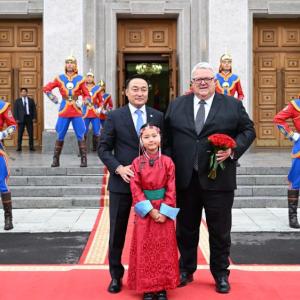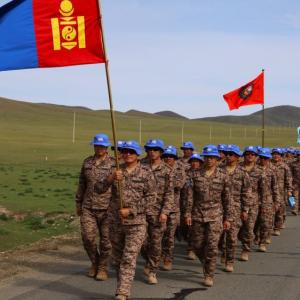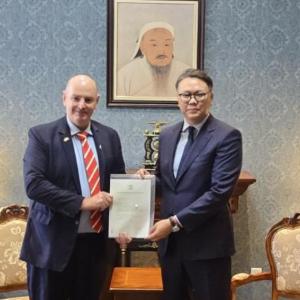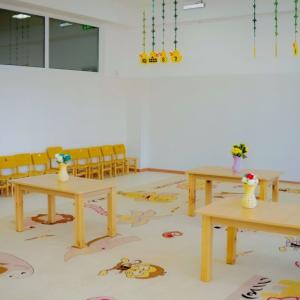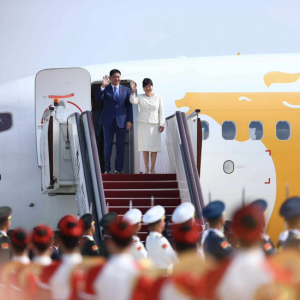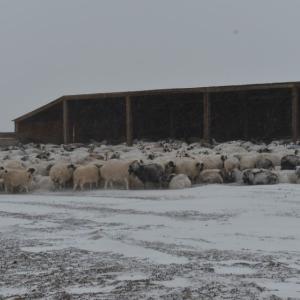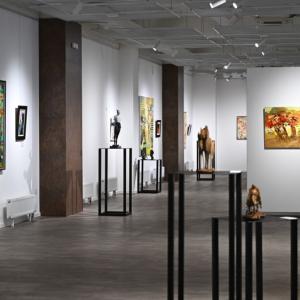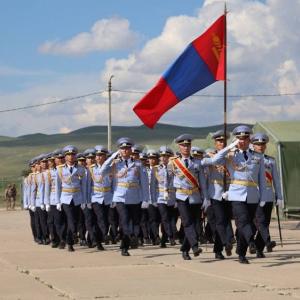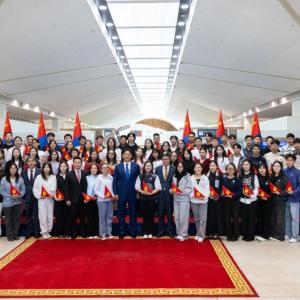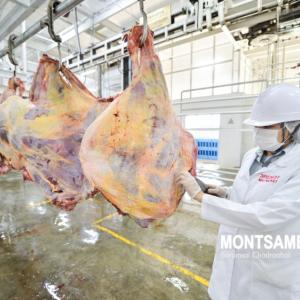Khureelen project aims to become the Mongolian ‘National Geographic Channel’
The Mongol MessengerThe ‘Khureelen’ (meaning ‘environment’ in Mongolian) project crew comprised of biologists, photographers, journalists and documentary filmmakers has been travelling through Mongolia since 2013 to create a repository where photos and videos of Mongolian nature, wildlife and animals are kept and to increase public awareness of endangered animal and wildlife nature of Mongolia.
Photographers U.Ganbayar, S.Tsatsralt, cameraman G.Batnyagt and some other artists, all of whom are fond of travelling and taking images of nature and the environment, got together under the National Society of Nature Conservation three years ago.
At first, they had been planning to make a TV series of a comprehensive documentary film in 2013-2016 within the Khureelen project. According to their plan, the project would be wrapped up within this year. But they have only completed about one-third of their planned works, as of today. However, project leader and photographer U.Ganbayar said that when they first started making a preliminary itinerary for their travel, they did not expect that there would be innumerable animals and places to explore in order to document all of them to pass down to the future generations of Mongolia before it is 'too late'.

“Our main objective is to make a video and picture archive of different classifications of biological lives which includes all living things, such as insects, plants, vertebrates and birds. We take pictures and videos of seeds growing into plants and lovely flower blooms or huge trees, as well as unusual geological formations and rare natural phenomenon. At first, professional biologists and researchers laughed at us for having a too big of a dream. But we are encouraged to whole-heartedly accomplish our goal in the last three years by travelling through Mongolia” said U.Ganbayar in his interview with the Mongol Messenger.
Precise predictions of the whereabouts of wild animals or natural occurrences of plants, is not easy. Also, weather conditions and other factors affect their trips. Sometimes they return with nothing. For example, on their last trip to Umnugobi Aimag to document Mongolian wild ass (khulan) and black-tailed deer, did not go as planned due to inaccurate planning. Animals can get enough water by eating certain plants in different regions; therefore, they did not come to the lake and river as anticipated. As Ganbayar said they were around ten days late.
 In the last three years, the Khureelen project crew filmed a total of 487 bird species, around 60 of 138 species of mammals, most of them are larger ones, 5 of 6 species of amphibians and only a frog in the Altai-Uvur Gobi Mountains is left to be filmed. Also, only 6 of a total of 75 species of fish were filmed because underwater filming not only requires technical capabilities and equipment but also special skills. Almost half of the animals listed in the Mongolian Red Book have already been recorded on camera. The Red Book lists 30 species mammals, 30 species birds, 5 species reptiles, 4 species of amphibians, 6 species of fish, 1 agnathans, 19 insects, 2 crustaceans, and 4 mollusk species in Mongolia as endangered, vulnerable or rare.
In the last three years, the Khureelen project crew filmed a total of 487 bird species, around 60 of 138 species of mammals, most of them are larger ones, 5 of 6 species of amphibians and only a frog in the Altai-Uvur Gobi Mountains is left to be filmed. Also, only 6 of a total of 75 species of fish were filmed because underwater filming not only requires technical capabilities and equipment but also special skills. Almost half of the animals listed in the Mongolian Red Book have already been recorded on camera. The Red Book lists 30 species mammals, 30 species birds, 5 species reptiles, 4 species of amphibians, 6 species of fish, 1 agnathans, 19 insects, 2 crustaceans, and 4 mollusk species in Mongolia as endangered, vulnerable or rare.
 They have also produced a travel documentary program currently being broadcast on several Mongolian TV channels every other week. It takes approximately 3 thousand km of travel to film one 25-minute TV program. Depending on the itinerary and hardships that could be encountered during the trip, the project crew is usually composed of 3 to 10 or more people.
They have also produced a travel documentary program currently being broadcast on several Mongolian TV channels every other week. It takes approximately 3 thousand km of travel to film one 25-minute TV program. Depending on the itinerary and hardships that could be encountered during the trip, the project crew is usually composed of 3 to 10 or more people.
“Having a Mongolian TV Channel, like National Geographic, which focuses primarily on documentaries on nature and wildlife, is our dream. We are motivated by the fact that our work would educate people on the value of wildlife and their environment, which eventually could bring the issue of nature protection and preservation into the spotlight. We also hope that our works, such as photo books or documentary films would become a promotion to attract tourists to Mongolia” said photographer U.Ganbayar.

Throughout their travels, the crew has noticed that Mongolian animals are much more easily startled or alarmed when encounter humans because they live wild in an untouched and unexplored nature of Mongolia without being introduced to humans. Some foreign documentary filmmakers and photographers who encountered them during their trips even said that Mongolian animals are ‘too wild’ compared to other animals around the world. For example, in Africa they do not easily run away or are frightened by humans. A number of rare and endangered species in the world can be found in Mongolia, including, Gobi bear or Mazaalai, Mongolian saiga antelope and Wild Bactrian camels.
Some interesting photos taken by U.Ganbayar of some rare species habitats and other animals you can see in Mongolia are featured in the Mongol Messenger's issue No 18 for May 6, 2016.
Ts.Baljmaa
Photo source: Khureelen project

 Ulaanbaatar
Ulaanbaatar
